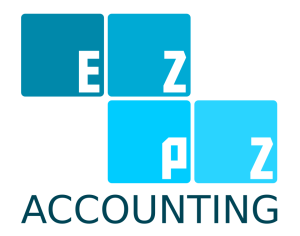The Difference Between Comprehensive/ Aggressive Accounting vs. Creative Accounting

Accounting principles are the basic premises, policies of operation, and fundamental components that lay the groundwork for the development of financial statements.
These principles are indispensable when drawing up an earnings report, just as the rules of a football game make the sport possible in the first place.
Accounting principles are the glue that holds together the accounting process. For accounting to be useful, accountants need to provide dependable and practical information. The information must be prepared on time, predictably, and able to give meaningful feedback for it to be practical. It must also be consistent, serve a utilitarian need, and make a material difference.
For instance, financial statements have a comprehensive objective, which is to give the user of the statements an effective tool for making decisions concerning the business.
But what happens when companies try to tweak these very same principles to meet their own ends? Several companies use aggressive or creative accounting to manipulate their earnings through deferrals and accruals. They do this perhaps to meet the expectations of analysts. While this practice is frowned upon by investors, authorities, and auditors, it is not necessarily fraudulent.
This article will attempt to distinguish the difference between aggressive accounting and creative accounting.
What is aggressive accounting?
As mentioned above, aggressive accounting is not necessarily fraudulent, but it deviates from the characteristics of typical accounting practices. Aggressive accounting aims to reflect a particular slant on the financial performance of a business rather than what is actually happening.
Accountants who care for their profession above everything else do not utilize aggressive accounting methods because it can be considered unethical and, if taken too far, illegal.
Businesses may prefer aggressive accounting because it enhances the financial position of the business in the present. It is up to the management to decide what method to use to assess and report their financial performance. However, investors frown on the use of aggressive accounting.
Aggressive accounting techniques
This technique uses methods that can overstate financial performance. However, it leads to a decline in the performance of the said company in the future. It thus creates a sustainability issue.
We list below some examples of aggressive accounting techniques.
- Inflating assets
Accountants allocate part of a business’ overhead cost, like staff, to inventory because there are indirect costs linked with finished products and work-in-process items. When they do this, it increases the value of the cost of goods sold and inflates the value of the business’ current assets.
- Revenue
Companies sometimes report gross revenue without deducting expenses to overstate it. Another way companies do this is by recording sales before fully complete For instance, they may record revenue from a sale in the current fiscal quarter when it won’t be fully completed until the next. This is where the sustainability problem comes in, as revenues for the next timeframe will decline because they already put it on record.
- Deferred expenses
It is an expense that the company has not consumed yet and recorded as an asset. Once the company consumes the item, they record it as an expense. Companies manipulate their profits by keeping them on the balance sheet and not as an expense on the income statement.
Creative accounting
Creative accounting is similar to aggressive accounting in such a way that both follow laws and regulations but veer from what these laws intend to accomplish. It takes advantage of possible workarounds in the accounting standards to project a more advantageous position for the business.
How creative accounting works
Creative accountants, using their expertise in accounting principles as well as in its regulations, alter figures to the company’s benefit. They try to make the business look successful and profitable. They tend to find loopholes in accounting and use them to their advantage and this misleads investors and the general public.
This can risk the company’s reputation, however, many are willing to take the risks because there is so much pressure being brought on by the expectations of hitting financial targets.
Also, better-looking figures can have other short-term advantages such as bonuses for directors, securing a needed loan, or an inflated valuation in case of a sale.
Types of creative accounting
- Depreciation charges
Accountants lower the depreciation charges by extending an asset’s useful life estimate. They also decrease the salvage value.
- Undervaluing pension liabilities
Companies can manipulate pension liabilities because they happen in the future. Accountants use company-generated estimates to account for them.
- Manipulating inventory
When accountants overstate the value of inventory, it will understate their COGS (cost of goods sold). This would lead to a higher net income, albeit artificially.
- Not recording contingent liabilities
Not recording contingent liabilities that are likely to happen and undervaluing them can boost shareholder’s equity and net income.
The Enron scandal
Enron Corp., an energy, commodities, and services company in America that once held $60 billion in assets, got involved in one of the most controversial bankruptcy filings in the history of the United States.
They inflated their revenue by reporting the value of energy contracts as gross revenue when it should have been as a commission they received as traders. That move exponentially raised their reported revenues between 1995 and 2000. They also hid their liabilities and understated losses.
These types of creative accounting practices also contributed to the downfall of Andersen Consulting.
Accounting conservatism
Accounting conservatism calls for a more cautious way of reporting the financial health of a company. It is a technique that is meant to guide uncertainty and backed up by a high level of verification before a business can claim any profit. It even presents the company in a worst-case scenario as revenue and assets are intentionally understated.
What are the benefits of accounting conservatism? Projecting a bleaker picture encourages companies to be more careful in making decisions. It also eliminates negative surprises and promotes positive surprises, a situation investors would rather have.
Key takeaways
It is always hard to spot untruthfulness in the way companies report their financial situations. Still, that does not mean that investors should simply accept financial statements at face value.
As an investor, examine the financial statements closely. Try to look past the management’s announcements and do due diligence. Evaluate the reliability of the auditors and focus on unusual variations in figures.
As a company owner, accounting decisions should not be taken lightly. While the line between creativity and illegality is often blurred, the importance of understanding and steering the direction of your accounting practices is most urgent.
